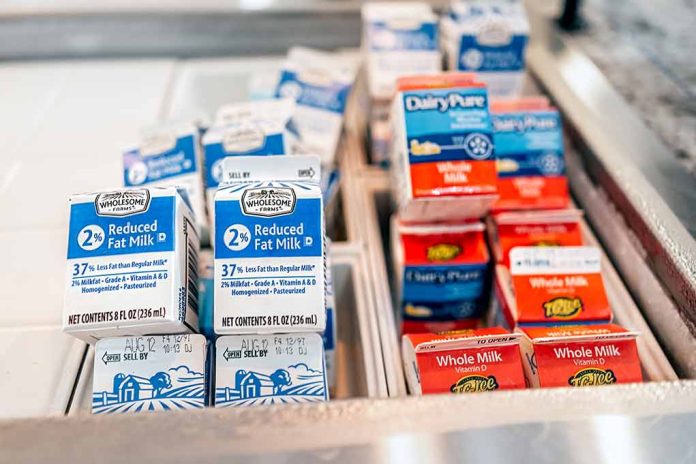
(IntegrityPress.org) – We came across this story and did a serious double take. Take a look at the increased number of cattle herds, the increased amount of infection found in cattle in general — and the real kicker – the fact that the virus was found in milk that actually hit store shelves! But hey, the USDA doesn’t think there’s a problem – no real health risk to humans. What do you think? Do you agree with the USDA? In the meantime, most of us here are being incredibly cautious about our milk choices… ~The Integrity Press Team
While the Department of Agriculture (USDA) reported that dairy cattle had tested positive for bird flu, also known as avian flu or H5N1, in March 2024, new analysis suggests that the infection may have taken hold as early as December 2023. Since March’s announcement about affected cattle in Kansas and Texas, a further six states have reported cases of bird flu found in more thirty-three cattle herds.
Officials say that the virus has now been detected in milk produced by affected cows, although they do not believe that the contaminated milk, which is more thick and yellow compared to normal milk — AND WAS FOUND IN STORES – poses any health risk to humans. The Food and Drug Administration (FDA) and the USDA have both reaffirmed their stance that commercial milk and dairy products are unlikely to be dangerous due to the pasteurization process. Milk from sick cows is also routinely disposed of and is therefore unlikely to make it to the shelves. The USDA has ordered farmers to test their cattle for bird flu before transporting them between states and has agreed to reimburse farmers the costs for testing cattle, including asymptomatic animals.
Avian flu is often fatal for birds, and can be fatal to humans, although the only person currently reported to have the virus in the U.S., a farm worker in Texas, has only experienced mild symptoms. Similarly, the affected cattle are said to have suffered mild symptoms of bird flu, including loss of appetite and decreased milk production. Officials say that they think the bird flu was introduced to cattle via a single incident of contact between cattle and an infected wild bird, or its feces. From there, it has been able to spread between animals and different herds and may even have spread to other countries via the export of cattle, with Canada being a common buyer of American cattle.
While very few of us actually come into contact with sick animals, those who do are advised to avoid it and/or to use correct personal protective equipment and practice proper handwashing techniques. But what about the rest of us? How do we know where our milk came from and what products might have come from farms that have had contaminated animals so we can make better buying decisions? Where’s that info?
Copyright 2024, IntegrityPress.org













